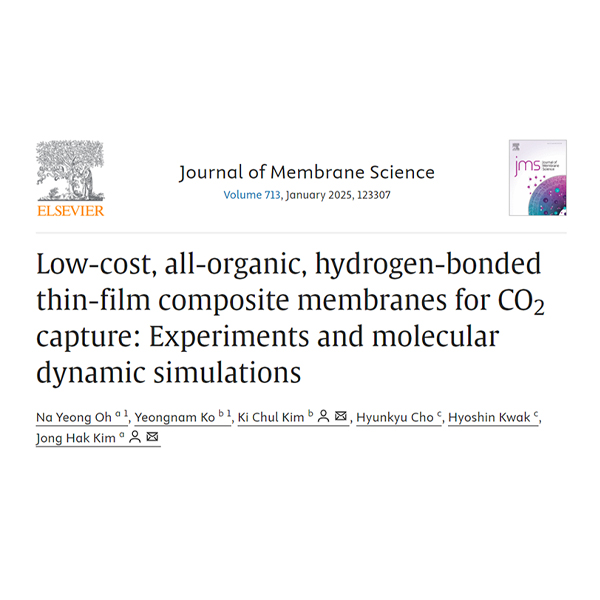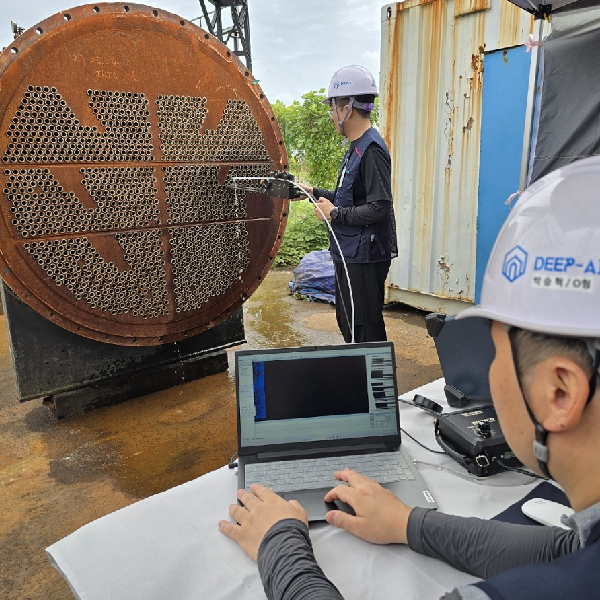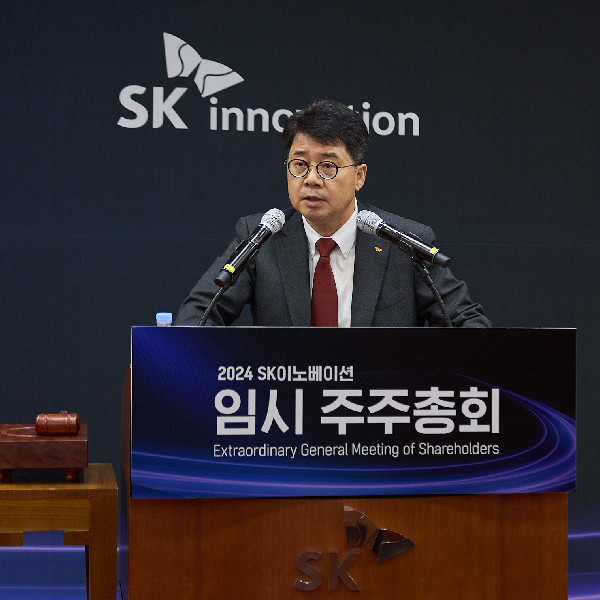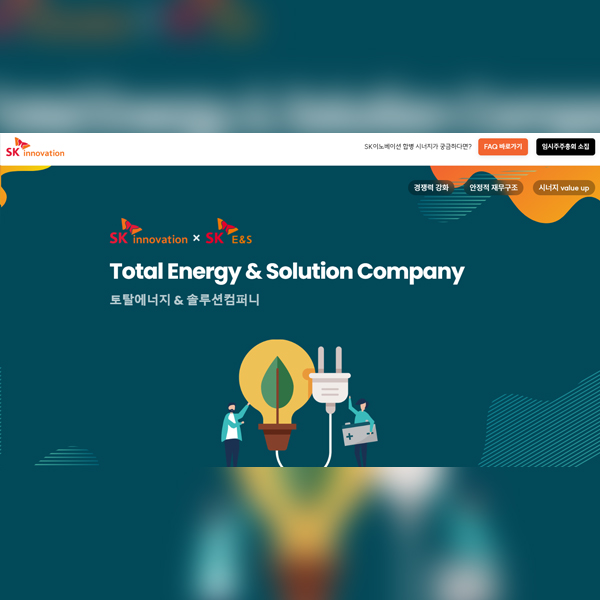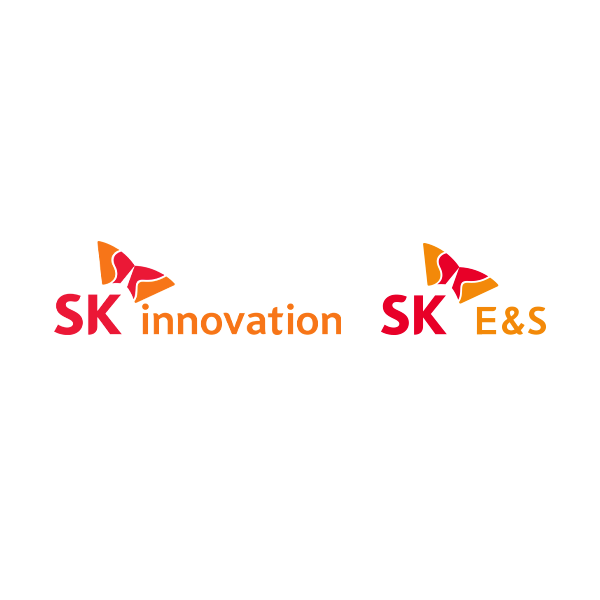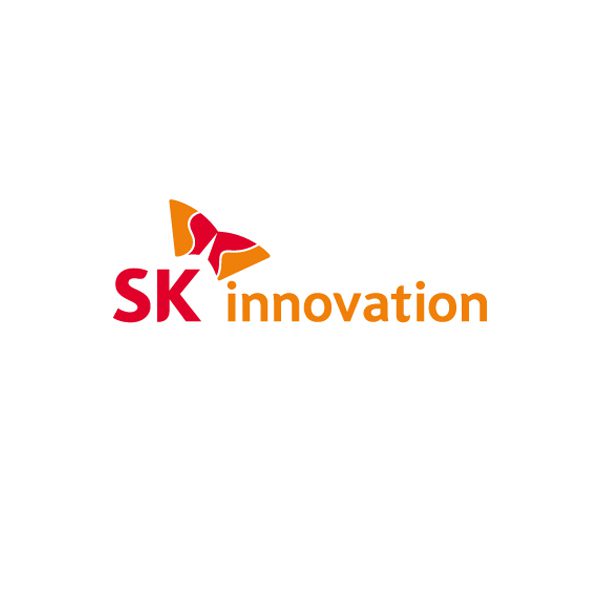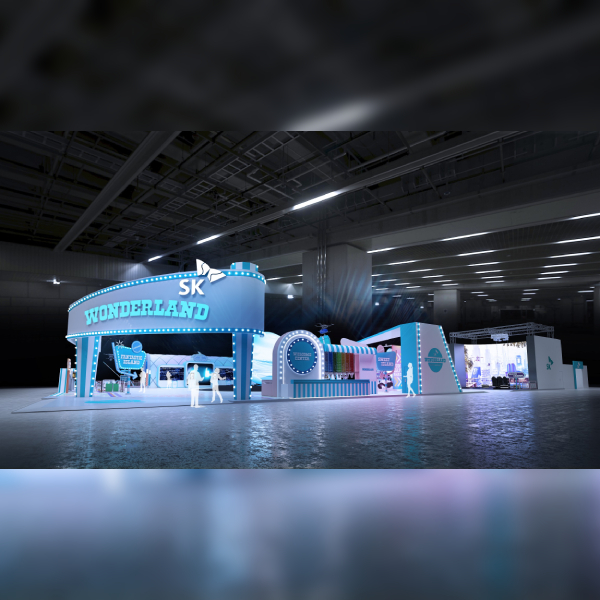 SK Innovation
SK Innovation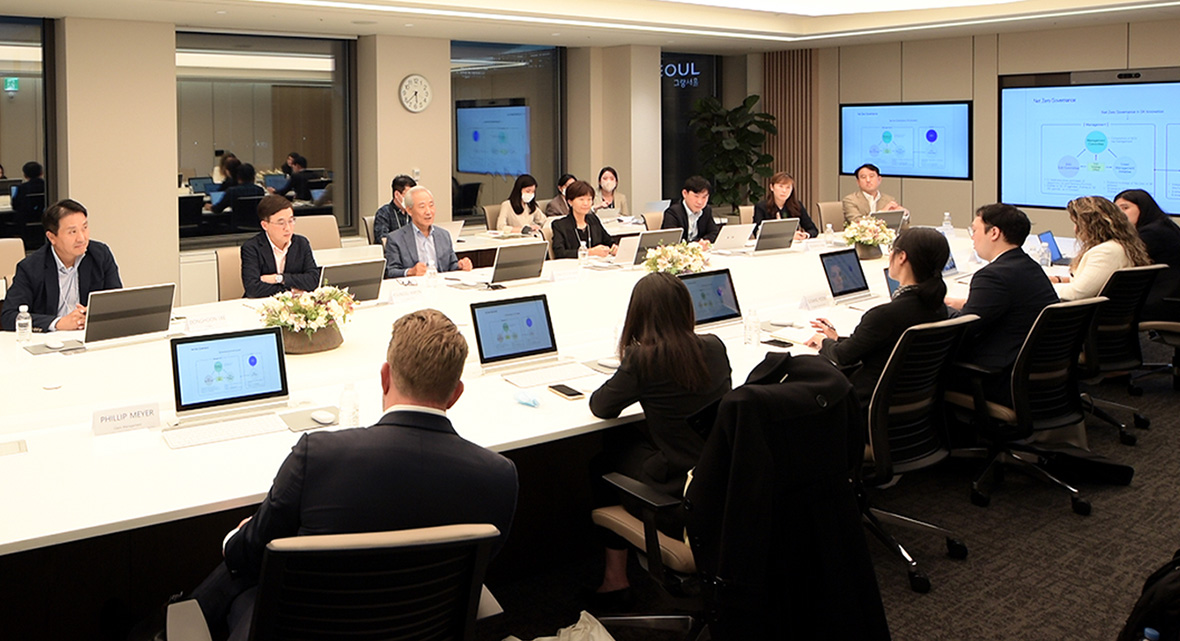
▲ SK Innovation held a meeting on October 6 (KST) with the Asian Corporate Governance Association (ACGA) to discuss the current state of ESG management and its outcomes.
As part of its ESG management, SK Innovation is proactive in communicating with stakeholders. In the second half of this year, the company held meetings with the ACGA*, and CA100+**, a prominent foreign investor group, respectively. SK Innovation discussed the authenticity of SK Innovation’s Board of Directors (BoD) regarding their views on ESG management throughout the two sessions.
*Asian Corporate Governance Association (ACGA): ACGA is an independent, non-profit membership organisation dedicated to working with investors, companies and regulators in the implementation of effective corporate governance practices throughout Asia.
**Climate Action 100+ (CA100+): Climate Action 100+ is an investor-led initiative to ensure the world’s largest corporate greenhouse gas emitters take necessary action on climate change.
On October 6 (KST), SK Innovation had the opportunity to speak with ACGA and member companies, presided over by its Chairman of the BoD, Kim Jong-hoon. During the meeting, SK Innovation revealed and discussed its reinforced BoD-based management and Net Zero implementations.
During the meeting, SK Innovation deliberated on ESG requirements from key external and internal stakeholders and committed to pursuing and executing them systematically. “We will further bolster the specialty of SK Innovation’s Board of Directors and expedite our implementation of the Financial Stories to continue elevating our corporate value,” stated SK Innovation Chairman of the Board Kim Jong-hoon.
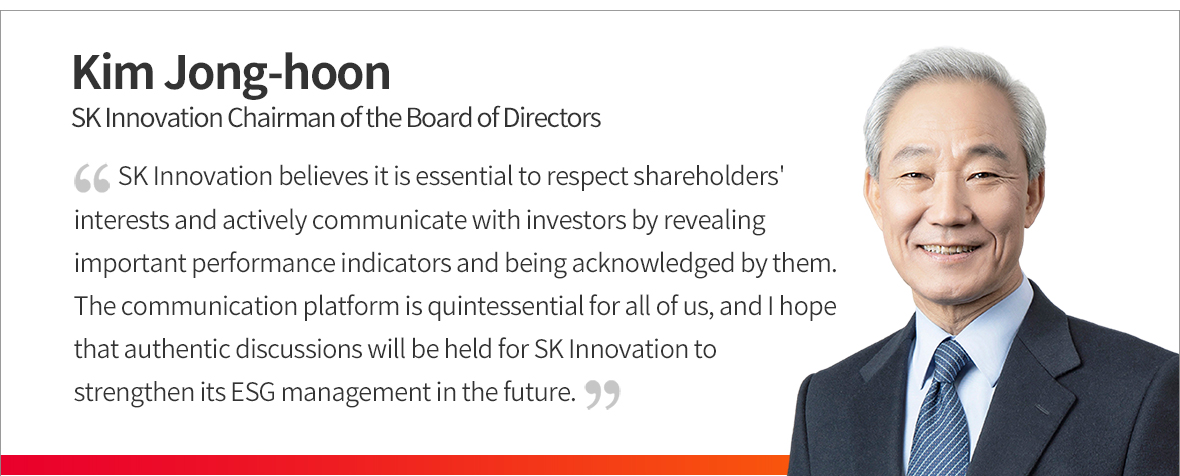
SK Innovation held a meeting with ACGA in August 2021 as well. Since then, the company has established a governance structure model by presenting its governance structure innovation and implementation directions to rating agencies and institutional investors, while engaging in active communication to strengthen its ESG management system.
Park Yoo-kyung, Director of APG Asset Management, who attended this year’s meeting following last year, looked over SK Innovation’s ESG management status and results and expressed her support for SK Innovation, which is wholeheartedly strengthening its ESG management system.
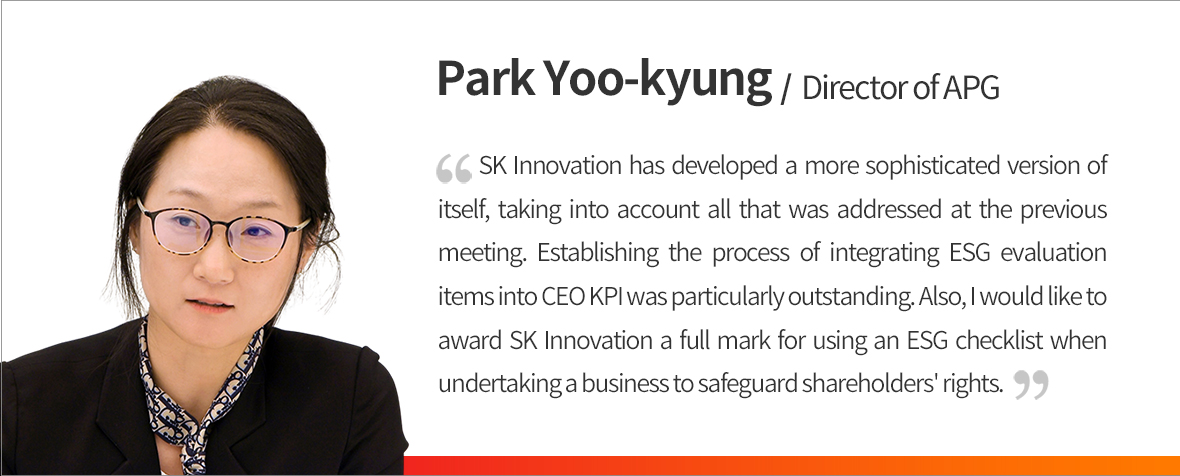
Previously, on September 2, SK Innovation and CA100+ held a video conference to discuss Net Zero and key ESG initiatives. Since 2021, SK Innovation has been holding an annual meeting with CA100+, and this year’s meeting featured a presentation on the company’s ESG implementation system and results based on its Net Zero and GROWTH strategies. After the meeting, one CA100+ official gave favorable feedback on SK Innovation’s sincerity towards Net Zero and ESG implementation system.
In the meeting with CA100+, SK Innovation established its Net Zero targets, which covered not only the GHG emitted in its business premises (Scope 1 & 2) but also the GHG generated throughout all processes of raw material production, transfer, sales, consumption, and disposal (Scope 3), and shared and discussed its current measures.
Furthermore, SK Innovation revealed its intention to develop and implement Beyond Net Zero strategies, which will enable the company to execute its environmental contribution more effectively and integrally across the globe by expanding its Net Zero performances and environmentally friendly businesses, including battery, plastic recycle, battery metal recycle, and others.

▲ SK Innovation met with CA100+ to review the current state of ESG management and its results on September 2 (KST)
The company also highlighted its ESG initiatives and outcomes, including ▲ the creation of a management system to address climate change, ▲the establishment and management of an ESG data platform and LCA*** infrastructure, and ▲the establishment of SK Innovation’s ESG management strategies, G.R.O.W.T.H**** system. During the meeting, one of the officials of CA100+ stated, “It was valuable in that it helps us to completely grasp and sympathize with SK Innovation’s sincere endeavors on ESG,” highly appreciating SK Innovation’s unwavering dedication to achieving Net Zero.
***Life-cycle assessment (LCA): A methodology for assessing environmental impacts associated with all the stages of the life cycle of a commercial product, process, or service. For instance, in the case of a manufactured product, environmental impacts are assessed from raw material extraction and processing (cradle), through the product’s manufacture, distribution and use, to the recycling or final disposal of the materials composing it (grave).
****G.R.O.W.T.H: Green Innovation, Road to Net Zero, Outstanding SHE Management, Winning the Trust, Together with Society, Happiness for all- Strategies established and promoted as a specific execution methodology for SK innovation’s financial story
Besides, SK Innovation presented and explained several key issues on Net Zero Roadmap and governance in the meeting with CA100+.
Q. What are the reduction targets by each means for energy/chemical businesses by 2025?
Direct reduction strategies such as energy efficiency enhancement or low carbon material provision have a substantial share in the short run by 2025. It is anticipated that the proportion of other reduction methods, such as investment in CCS (Carbon Capture & Storage) business and business conversion, will increase beyond 2030.
By 2025, we hope to have reduced emissions by improving efficiency/fuel conversion (about 850,000 metric tons), introducing low-carbon materials and optimizing operations (about 1.2 million metric tons), investing in Carbon Capture & Utilization (CCU)/Carbon Capture & Storage (CCS) businesses (170,000 metric tons), converting to renewable energy (540,000 metric tons), and others (350,000 metric tons).
Q. What specific strategies will be adopted to meet the Scope 3 emission reduction target?
It will be undertaken in two folds: lowering absolute Scope 3 emissions, and enhancing the fixed asset ratio. To begin, there are several options for attaining Scope 3 absolute emission reductions including direct reduction, the introduction of Net Zero Crude, and reduction through CDM(1) and external business among others. More information on the implementation strategies of SK Innovation affiliates can be found in the Net Zero Special Report. Second, in terms of fixed asset ratio extension, SK Innovation intends to increase the fixed asset ratio of green businesses such as batteries while continuing to increase its investment in low carbon intensity businesses. And these efforts are manifested in the form of figures that will be used to establish SK Innovation’s future carbon intensity reduction targets.
(1)Clean Development Mechanism (CDM): CDM, defined in Article 12 of the Protocol, allows a country with an emission-reduction or emission-limitation commitment under the Kyoto Protocol (Annex B Party) to implement an emission-reduction project in developing countries
The 90% reduction target for 2050 is based on the assumption that Net Zero carbon emissions are difficult to attain for energy sources with no alternatives in terms of the present technology, such as aviation fuel and marine oil. The SK Innovation targets are attainable at the current technological level, and if more readily available alternatives are to be discovered in the future, they will be included in the reduction options.
Q. What is the current status of CCS/CCU and renewable energy conversion, which have been proposed as Net Zero achievement options?
SK Innovation is currently investing in CCS with diversified approaches. First, SK Energy is collaborating with the Korea National Oil Corporation on a demonstration project utilizing a depleted gas resource known as the East-sea Gas Resource. The second concerns an investment led by SK Trading International in the United States, and it relates to a plan to use Net Zero crude oil generated through enhanced oil recovery (EOR), which directly collects carbon in the atmosphere (DAC, Direct Air Capture). Finally, SK Earthon struck an agreement with Malaysia’s Petronas and is exploring a potential site for a saline aquifer that will exclusively be used for CCS in the West Sea of Korea and other parts of Southeast Asia.
SK Innovation also seeks various ways to secure renewable energy through the purchase of Renewable Energy Certificates (REC), third-party PPA(2), and other efforts. Its battery and material businesses in particular have set a goal of achieving a 60% renewable energy use rate in 2025, and 100% in 2030, with the renewable energy use rate across all business sites last year being 24%.
(2)A third-party Power Purchase Agreement (PPA): A power transaction contract through which electricity produced by a power generation business operator with renewable energy facilities can be sold directly to electricity consumers through Korea Electric Power Corporation.
Q. SK Innovation is planning to conduct various Net Zero initiatives; what is the expected size of CAPEX?
While the CAPEX(3) size to achieve Net Zero by 2030 is predicted to be around KRW 3 trillion, SK Innovation’s pace of carbon neutrality is far faster than what is pursued at the government level, therefore surplus carbon credits are expected.
(3)Capital expenditure or capital expense (capex or CAPEX): the money an organization or corporate entity spends to buy, maintain, or improve its fixed assets, such as buildings, vehicles, equipment, or land.
Q. There was an issue with the existing minority shareholders losing their participation opportunity during the prior year’s green business spin-off, and consideration for inclusion on the ESG checklist was requested from these shareholders; what is the follow-up?
Following the meeting last year, we added the item to the ESG checklist after roughly a month of internal review and BoD resolution. Furthermore, the BoD keeps a close watch on the issue of minority shareholders as part of the ESG checklist.
As such, SK Innovation not only makes practical plans for the environment and local communities and implements them, but also actively communicates with the internal and external stakeholders to lead ESG management. It will establish a model of global governance and complete the ESG management system to continue its innovative moves as a leading global ESG management corporation.
–SK Innovation Board introduces its corporate governance to ACGA, focusing on securing “a model governance for completion of ESG and corporate value enhancement”
–SK Innovation reveals Net Zero Roadmap, aiming to reduce 50% carbon emissions in a decade and achieve Net Zero by 2050










 Youtube
Youtube Facebook
Facebook Instagram
Instagram Linkedin
Linkedin









